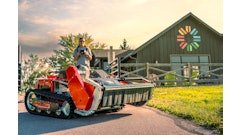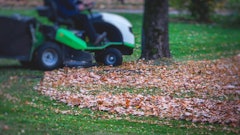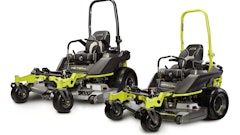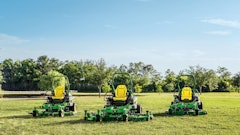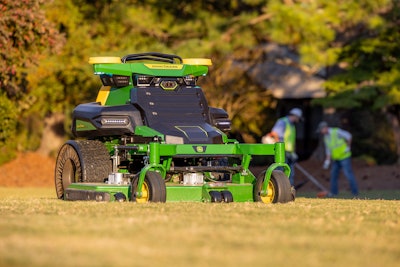
At CES this year, John Deere is introducing its latest iteration of mower technology, an autonomous zero-turn, stand-on mower.
CES, a tradeshow that introduces the newest innovations in a number of industries, including lawn and landscaping, runs from Jan. 7-10 in Las Vegas. Deere representatives are displaying it at their CES booth.
At a November press event in San Jose, Calif., Deere previewed the new mower and its technology for the media, and Green Industry Pros was there to take a look. The new machine is a fully electric, battery-powered mower with integrated batteries, reduced noise and emissions, and off-board charging options. With its 60-in. rear-discharge deck, it can operate autonomously, or manually as a stand on with an operator.
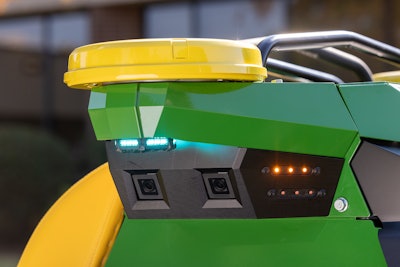 To operate autonomously and for object detection, there are several cameras installed on the front, back and sides of the mower, as well as two antennas for GPS and it uses wheel odometry to track wheel movement.John Deere
To operate autonomously and for object detection, there are several cameras installed on the front, back and sides of the mower, as well as two antennas for GPS and it uses wheel odometry to track wheel movement.John Deere
Leveraging Ag Expertise
Deere, which has a 60-year history in the turf business, leveraged existing technology from that wheelhouse, as well as from its advances in production agriculture, to develop the mower, with features such as 360-degree perception. Deere engineers also worked closely with lawn and landscaping professionals to tailor technology to the needs of their commercial jobs.
The vehicle is designed for commercial landscaping, targeting office parks, recreational parks, and solar farms. The mower can handle different objects and obstacles, with a decision-making process tailored to the application and terrain at hand. The mower incorporates Deere’s rev2 autonomy hardware and software, enabling GPS mapping, sensor-based navigation for GPS-denied areas, and obstacle detection. The boundary mapping process is straightforward, involving driving the perimeter and marking interior areas to avoid.
With a push of a button, the mower maps out a property and stores that data for later, so when contractors return to the site for future mowing, eliminating repeated setup. To operate autonomously and for object detection, there are several cameras installed on the front, back and sides of the mower, as well as two antennas for GPS and it uses wheel odometry to track wheel movement.
Watch the mower in action:
Safety was a chief concern when it came to designing and engineering the mower, said Brad Powers, the lead for the autonomy engineering side of the mower’s design.
“It’s all about making sure we have a provably safe product,” he said. “On top of that, we’ve spent a lot of time and a lot of effort developing repeatable and reliable hardware that we expect to operate for many, many years.”
Powers said they are still working out the mower’s slope-handling capabilities, as the requirements for autonomous mowing on a grade are still in development.
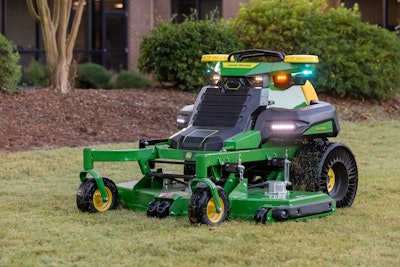 The mower uses integrated batteries for higher energy density and longer runtime. The runtime depends on conditions, with up to four hours of mowing time in heavier conditions and more than 10 hours in lighter conditions.John Deere
The mower uses integrated batteries for higher energy density and longer runtime. The runtime depends on conditions, with up to four hours of mowing time in heavier conditions and more than 10 hours in lighter conditions.John Deere
Power and charging features
The mower uses integrated batteries for higher energy density and longer runtime. The runtime depends on conditions, with up to four hours of mowing time in heavier conditions and more than 10 hours in lighter conditions.
The vehicle does not have docking capabilities but can be charged off-board using standard power outlets. The mower can be charged overnight using 120- or 240-volt power outlets, with a charge time of around 12 to 14 hours for 120 volts and six hours for 240 volts. The mower can be charged on-site or at a central location, with provisions to prevent running out of power.
“We’ve actually had data of over 10 hours of actual mowing, so what we’re seeing is, based on real customer usage data, is we’re going to cover a large part of that market in terms of the actual mowing that they need to accomplish in a day,” said Tim Lewis, lead engineer for the vehicle side of the autonomous commercial mower development.
The mower was designed to use integrated batteries instead of swappable batteries.
“You may have seen some concepts that would, when you're low on charge, you swap in for charged batteries, something like you do on a handheld,” Lewis said. “Our approach here is really to have the energy on board and get the job done and not worry about it. That's kind of where we took the integrated approach, which gives us a higher energy density in terms of how much volume we need on the machine, and how we control how those are packaged, as well.”
Mowers needing a charge while out in the field can find an electrical outlet or utilize charging capabilities from a trailer.
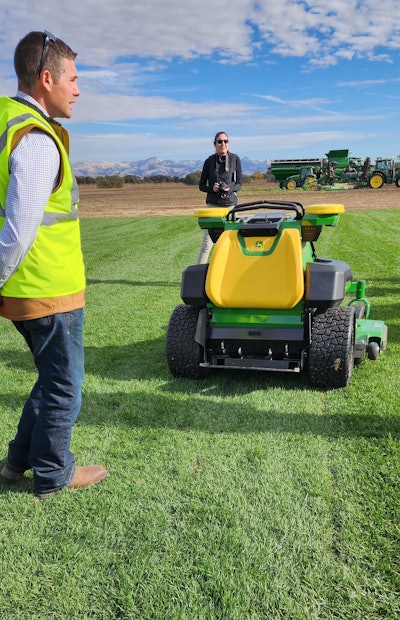 Tim Lewis, lead engineer for the vehicle side of the autonomous commercial mower development, talks about the features of the new mower.Gigi Wood
Tim Lewis, lead engineer for the vehicle side of the autonomous commercial mower development, talks about the features of the new mower.Gigi Wood
Tackling labor shortages
The mower was designed to help meet the challenges of the commercial lawn and landscaping industry, by redistributing labor needs in the field. The mower takes on the mowing so crews can focus on other, more skill intensive tasks, such as pruning and trimming. The new mower is also designed to be easy to operate and program, making it more accessible to less-experienced workers.
“They want to reallocate labor onto different aspects of the job,” Lewis said. “Mowing is the fundamental thing. You can imagine walking up to an office and everything is neat and clean, and then the grass isn’t cut right. You can’t miss that part. But it’s not the highest margin (work) and it’s a tough job to do.”
When talking to end users, Deere learned that professional lawn and landscaping contractors want their best workers to focus on higher-margin tasks.
“What they're really looking for is to not only fill labor gaps, but then be able to leverage the labor that they do have to be able to get on to the different parts of the job that they would really like to do that it takes a human and that delicate work to do,” Lewis added. “You think about trimming, think about edging, pruning, actually installing those beds, or maintaining the flower bed, things like that, that they're really wanting to get that labor onto.”
Producing quality work was a top priority in designing the new mower, as well. While on the surface the act of mowing might seem simple, a lot goes into the work, such as learning the commercial property needs, and much of it involves nuanced detail work.
“There’s certain striping patterns that need to be done, certain directions that need to be mowed for particular applications,” Lewis said. “There are lots of different nuances that we want to be able to take into account, to not just address labor, but to address autonomy and implement it.”
The mower has a stand-on platform that folds down for manual mode and can be folded up for autonomy mode.
Deere is exploring retrofit options for earlier models and sees potential for customization, such as programming unique mowing patterns. The mowers will likely be manufactured at Deere’s North Carolina factory, which specializes in commercial mowing equipment.



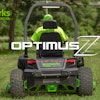
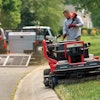
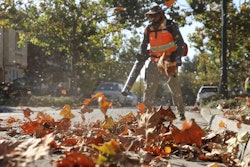
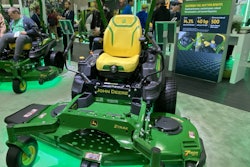
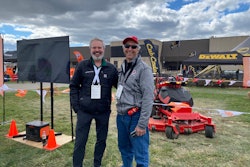

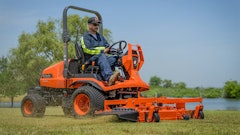


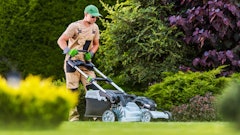
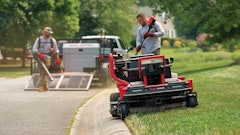
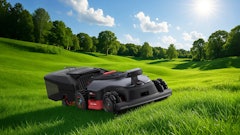
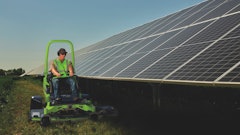
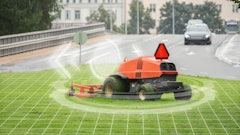
![Gravely Pro Turn Mach One My23 Dsc03139 Edit 1200x800 5b2df79[1]](https://img.greenindustrypros.com/mindful/acbm/workspaces/default/uploads/2025/10/gravely-pro-turn-mach-one-my23-dsc03139-edit-1200x800-5b2df791.BucBnDoN22.jpg?ar=16%3A9&auto=format%2Ccompress&fit=crop&h=135&q=70&w=240)
